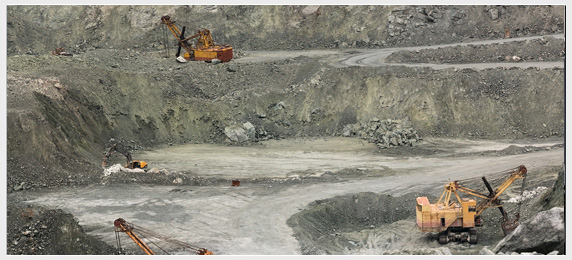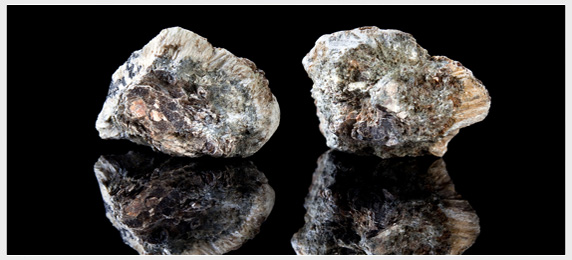What is Asbestos
Asbestos is a generic term given to several natural earth mineral silicates found in seams or veins throughout the world's crust/rock, mainly in Canada, South Africa and Australia.
Asbestos is one of the most pervasive environmental hazards in the world, not only found naturally in the environment but present in more than 3,000 manufactured products. All forms of asbestos can result in asbestosis (a progressive fibrotic disease of the lungs), lung cancer, and mesothelioma, a cancer arising in the membranes lining the pleural and peritoneal cavities of the lung.
There are two types of Silicates: Serpentines and Amphiboles known commonly as white, brown and blue asbestos.
|
Serpentines |
Chrysotile |
White asbestos |
|
|
Amphiboles |
Amosite (or grunerite)
|
Brown asbestos |
|
|
|
Crocidolite |
Blue asbestos |
|
625,000 deaths directly related to asbestos exposure
It is predicted that 625,000 deaths will be directly related to asbestos exposure by 2020, an estimate of between 3500 and 4000 dying each year from asbestos related diseases. This yearly figure is still increasing, proving many theories wrong that the death rate would have peaked between 2000 and 2005. This is based on a prediction that the peak of asbestos imports during the late 1960s into the UK and carry a 40 year incubation period for the cancers to develop.
Some of the major types of asbestos fibres and their chemical structures have been extensively reviewed, some of the important mechanisms by which asbestos fibres cause toxicity, by generating iron-derived free radicals as well as reactive nitrogen species (RNS), which in-tern releases cytokines, inducing genotoxicity and altering immune responses. Despite intensive investigation, the precise pathogenic mechanisms by which asbestos fibres cause pulmonary toxicity are not fully established.
Asbestos can induce cancer
Asbestos can induce cancer, which is a multistage process. Cancer initiation occurs when DNA is damaged and is perpetuated by the proliferative signals from the asbestos fibres reacting with cell. These results from altered gene expressions, (increased proto-oncogene or reduced tumour suppresser gene expression). All forms of asbestos induce DNA damage and proliferative signals in relevant lung target cells.
Asbestos Imports in to the United Kingdom
With imports of asbestos into the UK peaking in the late 1960s, when the physical and chemical properties of asbestos surpassed any other man made materials. The following properties are what made asbestos such a valuable product over the years:
- Fine fibres of Crocidolite and chrysotile are ideal for weaving into textiles
- Thermal stability makes asbestos suitable for use in friction linings
- High tensile strength
- Low thermal conductivity has lead to asbestos being used as an insulation material
- Resistance to acid attack has widened industrial uses
World Health Organisation (WHO) and Banning Asbestos
Various research by The World Health Organisation (WHO), through its International Agency for Research on Cancer (IARC) and in the collaborative program with the International Program for Chemical Safety (IPCS), made several attempts to assess the effects of asbestos fibres on human health.
Together with the ILO and the UN Environment Program the WHO have continued to assess the effects of different asbestos fibre types on human health, but not in a timely manner as to effect on the continued global use of asbestos (IARC 1973, 1977, 1987, IPCS 1986, 1989, 1996, 1998; WHO 1989, 1997). It was not until 1982 when the Doll and Peto review suggested sufficient evidence of cancer causation, this now include cancer of the larynx, digestive tract, and kidney.
Asbestos Awareness and Management are now critical
Asbestos Awareness and Management are now critical to reducing the health effects on the population that followed the above scientific facts. The UK banded the use of Crocidolite in 1986, Amosite in 1992 and Chrysotile in 1999. This was to save money as the increasing costs in treating patients on the National Health Service and the affect on members families that contracted asbestosis would lead to compensation claims. Alternative products became available as a substitute/alternative material to allow the ban to be introduced without effecting industrial production.
|
Countries that have ratified the ILO Asbestos Convention (ILO 1986) and the year ratified |
|
|
Country |
Year |
|
Belgium |
1996 |
|
Bolivia |
1990 |
|
Bosnia |
1993 |
|
Brazil |
1990 |
|
Cameroon |
1989 |
|
Canada |
1988 |
|
Chile |
1994 |
|
Colombia |
2001 |
|
Croatia |
1991 |
|
Cyprus |
1992 |
|
Ecuador |
1990 |
|
Finland |
1988 |
|
Germany |
1993 |
|
Guatemala |
1989 |
|
Netherlands |
1999 |
|
Norway |
1992 |
|
Portugal |
1999 |
|
Russia |
2000 |
|
Serbia |
2000 |
|
Slovenia |
1992 |
|
Spain |
1990 |
|
Sweden |
1987 |
|
Switzerland |
1992 |
|
Uganda |
1990 |
|
Uruguay |
1995 |
|
Zimbabwe |
2003 |
|
Asbestos bans in ten Asian countries |
|||
|
Country |
Crocidolite |
Amosite |
Chrysotile |
|
China |
Yes |
No |
No |
|
Indonesia |
NR |
NR |
No |
|
Japan |
Yes |
Yes |
No |
|
Korea |
Yes |
NR |
No |
|
Malaysia |
Yes |
No |
No |
|
Philippines |
Yes |
Yes |
No |
|
Singapore |
Yes |
Yes |
No |
|
Taiwan |
Yes |
Yes |
No |
|
Thailand |
Yes |
Yes |
No |
|
Vietnam |
No |
No |
No |
Asbestos Awareness and Management focuses on trades working within the construction and refurbishment industries, as plumbers and electricians are typically the most likely trades to be exposed to asbestos materials that have either deteriorated or been inadequately removed over the past 25 years since the first UK ban was introduced.
The Health and Safety Executive have had several advertisement campaigns to highlight the risk of working with asbestos material and for the importance of carrying out refurbishment/demolition surveys prior to carrying out the works. The introduction of regulation 4 now requires the duty holder/landlords to have an up to date asbestos management survey and management plan.
Further Information
If you would like to know more or are interested in a quote we would be happy to help. Phone us on 07730 446 224, email us at info@survey-safe.com or fill in our enquiry form and we will be in touch as soon as possible.
Survey Safe® - 07730 446 224 - info@survey-safe.com
Registered Office: Wagstaffs, Richmond House, Walkern Road, Stevenage, Herts SG1 3QP
Survey Safe® :: 07730 446 224
Survey Safe®
07730 446 224
Areas we cover
Areas we cover in London :: A
Areas we cover in London :: B
Areas we cover in London :: C
Asbestos articles
Asbestos: A possible cure being developed for Mesothelioma
Asbestos: The importance of regular staff medicals
Mesothelioma and Asbestosis: A comparison
86 per cent of school buildings contain asbestos
Workplace exposure limits
Controlling noise at work
Legionella risk
Asbestos re-inspection
Asbestos related products
Magnesite floor screeds
Asbestos in vermiculite
Chrysotile fuse carriers
Asbestos air monitoring
Asbestos cement roofs
Surviving mesothelioma
Cancer deaths from asbestos at all time high
Asbestosis
Asbestos exposure at ground zero after 9/11
Asbestos insurance claims
More asbestos related prosecutions
New asbestos regulations introduced
Asbestos contractor fined
Asbestos is a hidden health hazard in millions of homes
Asbestos exposure
Contractor fined for removing asbestos in an open wheelbarrow
Past and present uses for asbestos
Asbestos filters used in cigarettes
Privacy policy
Website map







 1
1 2
2 3
3 4
4 5
5



